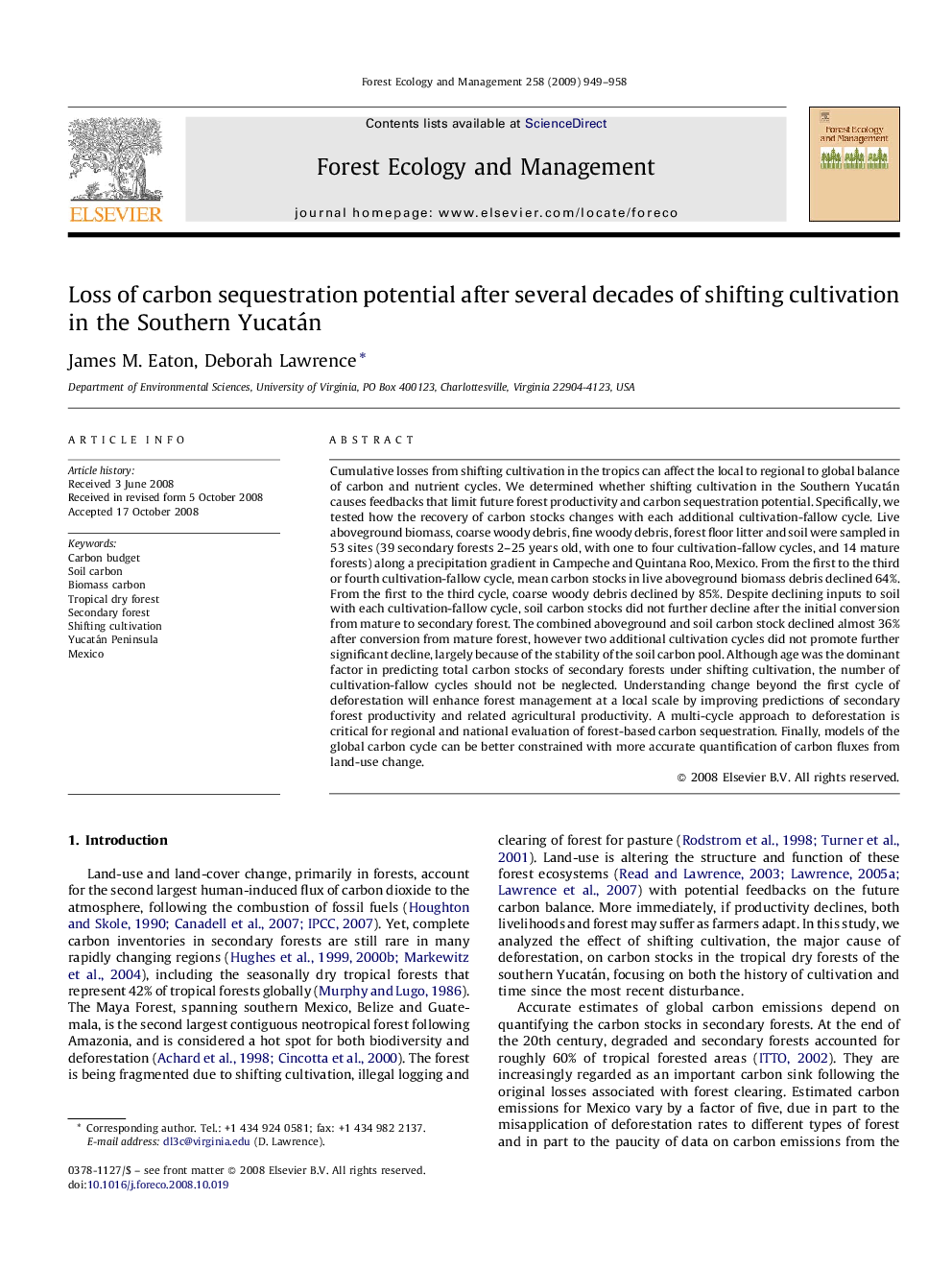| Article ID | Journal | Published Year | Pages | File Type |
|---|---|---|---|---|
| 88331 | Forest Ecology and Management | 2009 | 10 Pages |
Cumulative losses from shifting cultivation in the tropics can affect the local to regional to global balance of carbon and nutrient cycles. We determined whether shifting cultivation in the Southern Yucatán causes feedbacks that limit future forest productivity and carbon sequestration potential. Specifically, we tested how the recovery of carbon stocks changes with each additional cultivation-fallow cycle. Live aboveground biomass, coarse woody debris, fine woody debris, forest floor litter and soil were sampled in 53 sites (39 secondary forests 2–25 years old, with one to four cultivation-fallow cycles, and 14 mature forests) along a precipitation gradient in Campeche and Quintana Roo, Mexico. From the first to the third or fourth cultivation-fallow cycle, mean carbon stocks in live aboveground biomass debris declined 64%. From the first to the third cycle, coarse woody debris declined by 85%. Despite declining inputs to soil with each cultivation-fallow cycle, soil carbon stocks did not further decline after the initial conversion from mature to secondary forest. The combined aboveground and soil carbon stock declined almost 36% after conversion from mature forest, however two additional cultivation cycles did not promote further significant decline, largely because of the stability of the soil carbon pool. Although age was the dominant factor in predicting total carbon stocks of secondary forests under shifting cultivation, the number of cultivation-fallow cycles should not be neglected. Understanding change beyond the first cycle of deforestation will enhance forest management at a local scale by improving predictions of secondary forest productivity and related agricultural productivity. A multi-cycle approach to deforestation is critical for regional and national evaluation of forest-based carbon sequestration. Finally, models of the global carbon cycle can be better constrained with more accurate quantification of carbon fluxes from land-use change.
